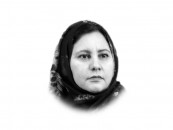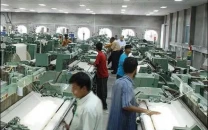A grand plan to educate our children
The vision of 100 per cent literacy — especially in Sindh — seems to be fading like a mythical dream

The writer works for the Public Interest Law Association of Pakistan
This is especially true these days, a year and a half after the Sindh Education Sector Plan (SESP) 2014-18 was launched. A promising document, the SESP 2014-18 is an incredibly comprehensive piece of work. For those who have not seen it or missed the news, the 348-page SESP was put together through a concerted effort by Unicef, the European Union Reform Support Unit, and the Education and Literacy Department of the Sindh government, and it provides a seemingly exhaustive road map and detailed targets for education in the province for the next five years.

The key objectives for education in Sindh that have been covered in the plan include (but are not limited to) big tangible indicators such as the net enrolment ratio (NER), adult literacy and equity in access to education.
At its launch two years ago, a very content senior minister of education had announced, “I am pleased to share with you the first-ever SESP 2014-18, which provides a new vision and an instrument to implement the legal obligation of Article 25-A of the 18th Amendment that mandates Sindh to provide free and compulsory education to all children aged five to 16 years in Sindh … I assure you that I will lead all the important legislations and policies suggested in the Sector Plan, or any other measures required for improving education.”
But before we dissect the honourable minister’s promises or his intentions, let’s look at what the government is up against in this beleaguered province. According to Alif Ailaan’s “The State of Education in Pakistan” report, half of Sindh’s children (i.e., 6.2 million) are not in school. In terms of infrastructure, only three out of five government schools in the province have access to clean drinking water, almost half are missing latrines, one in seven schools have a boundary wall, and one in three schools have no electricity. Sindh also has the dubious distinction of being home to 6,164 ghost schools — that means every seventh school is non-functional.
The SESP then reflects a pragmatic push to increase literacy levels and it should be commended for that. Under the SESP, the government has committed (amongst other targets) to increase the NER in primary schools (grades one to five) from 59 to 77 per cent and from 34 to 50 per cent in middle school (grades six to eight).
So we have a pragmatic dream, we have thrown a spotlight on the problem, and we have charted a feasible path. Alas, those at the helm seem to think the problem is solved.
More than a year down the road and with next to no movement on the targets, the SESP seems set to be lost in cyberspace, like so many development plans before it. Attempts to learn about the status of the report with regard to the goals have failed — a clear shortcoming in observing the constitutional right to freedom of information. The whole exercise is worryingly reminiscent of the fate of the Millennium Development Goals (MDG), which Pakistan was supposed to meet last year. The MDGs were a major push for global development and a much larger platform in terms of scope and the number of indicators. Pakistan failed to meet most of the goals, such as the eradication of extreme poverty, promotion of primary education, checking child mortality, promotion of gender equality and ensuring environmental sustainability.
We failed in a big way, with Pakistan being off-track on 23 of the 34 MDG indicators. There was a variety of reasons for this, chief amongst them being a lack of monitoring, supervision and accountability. By the time the MDG deadline arrived and the Senate took notice, Planning and Development Minister Ahsan Iqbal did what many before him had done. In penning the following reply to the Senate on Pakistan’s performance on the MDGs, he took refuge in words (what else?): “The reasons for missing most of the indicators include internal and external, economic and non-economic challenges.” That pretty much deflected the blame and covered every possible excuse.
Given the progress thus far made on the indicators and targets mapped out in the SESP, it would be naive to expect any other outcome if it were ‘implemented’ in the same manner, as the more important (in theory) and grander MDGs. And without adequate government funding, you cannot build or upgrade schools and hire good teachers, no matter how immaculate and comprehensive the plan.
For its part (if anyone cares to peruse the document), the SESP is an opportunity to integrate the dream of 100 per cent literacy into a holistic vision and a road map that can define a sustainable educational agenda for Sindh. It is time those at the helm were questioned and challenged, and the public was engaged to create ownership so that education and the goal of achieving increased literacy gets a much-needed push in Sindh.
Published in The Express Tribune, April 29th, 2016.
Like Opinion & Editorial on Facebook, follow @ETOpEd on Twitter to receive all updates on all our daily pieces.












1726134115-0/BeFunk_-(41)1726134115-0-208x130.webp)



COMMENTS
Comments are moderated and generally will be posted if they are on-topic and not abusive.
For more information, please see our Comments FAQ